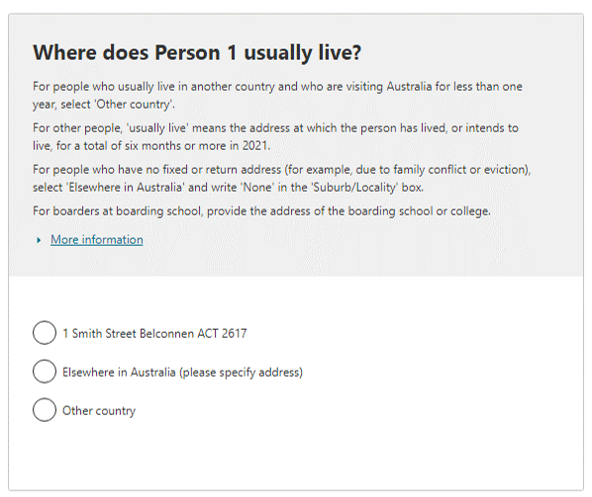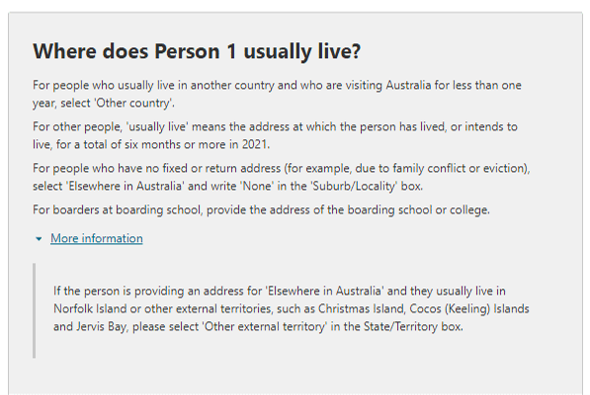Image

Description
More information
Image

This variable indicates whether a person's distance to work was calculated using a straight-line or road network distance. A straight-line distance is only used where the data is not available to calculate based on a road network (for example, there was a break in the underlying road network data as a person travelled between an island and the Australian mainland), or the straight-line distance of the commute is greater than 250 kilometres.
Persons aged 15 years and over who stated their labour force status as ‘employed’
| Code | Category |
|---|---|
| 1 | Distance to work calculated with a straight-line distance |
| 2 | Distance to work calculated with a road network distance |
| 3 | Did not commute |
| @ | Not applicable |
Number of categories: 4
Did not commute (3) category comprises of persons whose mesh block of PURP and mesh block of POWP were the same and stated they:
Not applicable (@) category comprises:
The variable is created when the data for Distance to work (ranges) (DTWP) variable is processed. A code is assigned to the record depending on which method was used to derive distance to work. A straight-line distance is only used where the data is not available to calculate based on a road network, or the straight-line distance of the commute is greater than 250 kilometres.
A straight-line distance is likely to underrepresent the true distance of a commuting route, so a correction factor is incorporated by multiplying the straight-line distance by 1.3. This value was selected based on ABS analysis on the difference between road network and straight-line distance, and the value also aligned closely with similar studies. The source of road network data was Navteq November 2021 (produced by HERE Technology) to ensure a representative network with updates as close to Census Night as possible.
This variable was first introduced in 2016.
In 2021 category 3 'Did not commute' was added. In 2016 persons who did not commute were coded under category 1 and 2.
This variable does not have a non-response rate as it is created by using responses from more than one question on the Census form.
A number of regions across the country were in various stages of lockdown on Census Night, and the week preceding it, resulting in a greater number of people working from their homes. Not only may this impact their responses for their place of work, but also, their travel to work. Guidance on how to correctly respond was provided at the time on the Census website, as follows:
If you are currently working from home due to COVID-19 restrictions, but usually attend a workplace, please write the employer's usual workplace address.
If you were employed in the four weeks prior to the current lockdown period, but haven't been able to work in the last week due to lockdown or requirement to self-isolate, please select 'Yes, but absent on holidays, on paid leave, on strike or temporarily stood down'.
If you were employed in the four weeks prior to the current lockdown period, but haven't been able to work in the last week due to COVID-19 restrictions or requirement to self-isolate, please answer all questions reflecting your usual occupation. This includes your role (such as occupation and tasks performed) and information about your employer (such as industry and number of employees).